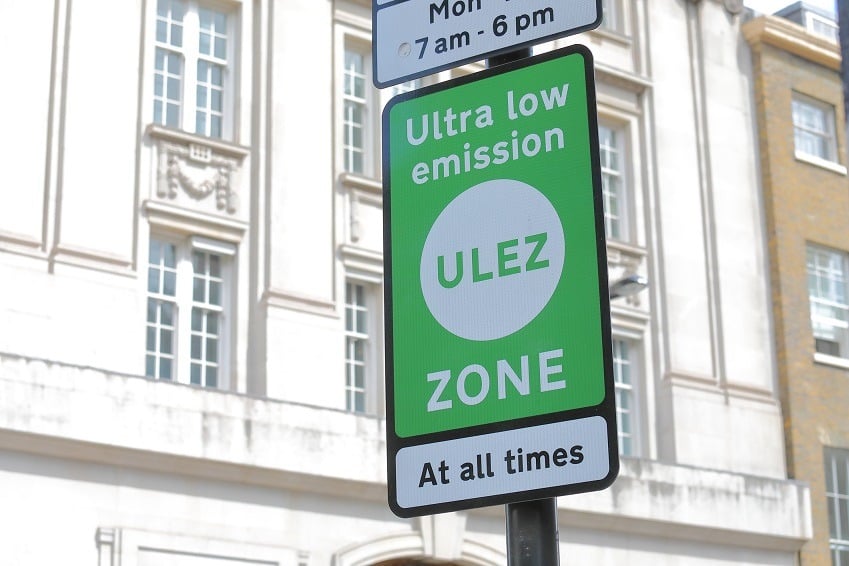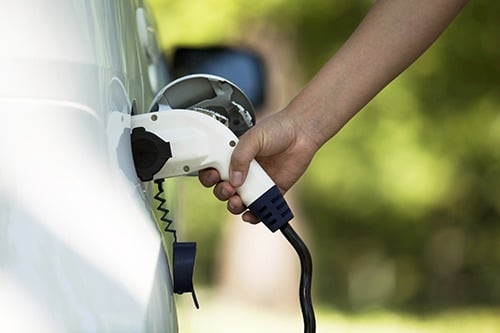According to a recent study, there are now over 1 million electric vehicles on the road in America, and that number is expected to rise to 3.5 million by 2025.
While electric vehicles still make up a small percentage of total vehicle sales, it’s clear that they are here to stay. But what does this mean for fleet managers, business owners, and small businesses in the US?
The rise of electric vehicles around the world
The UK is one of many countries to embrace the electric vehicle revolution. London, for example, has implemented an Ultra Low Emission Zone (ULEZ) to combat air pollution. This has been an incentive for UK drivers and companies working in the ULEZ to go green. By switching from gasoline vehicles to their electric counterparts, they avoid having to pay the fees to which older, less eco-friendly vehicles are subject.
In other parts of the UK and throughout Europe, large cities have introduced similar low emission zones. With citizens and governments around the world becoming more conscious about the environmental impact of high emissions, they are also realizing the various benefits of owning an electric car. These can include tax breaks, reduced running costs and improved performance over traditional gas-powered cars.
It’s clear that Europe and the UK are well on the way towards a more sustainable future – something that other countries are looking up to as an example for their own policies in helping reduce air pollution levels.

Why has the US has been slow to adopt electric vehicles?
While electric vehicle technology has been rapidly evolving, few federal tax breaks have incentivized the US public to take up EV’s. Additionally, used electric vehicles tend to be more expensive than their gas counterparts, making EV’s a costly option for many people.
Although there are 45 states in the US (as of April 2022) that offer limited tax incentives and rebates for choosing electric vehicles, there is no standardization. Colorado and Connecticut are at the top for EV tax rebates, offering owners $5,000 per electric car.
Much of the population might not even be aware of their states’ programs and, as such, aren’t benefitting from those subsidies. If you live in the states without incentives, there is literally no recompense for the time, money and energy it takes to convert to electric vehicles.
Whether this lack of state and federal incentive indicates a backlash against green initiatives is debatable, but certainly when it comes to promoting electric vehicles the incentives are few and far between for US business owners. America is still dependent on traditional fuel sources—gas and diesel—and it will take a lot of fundamental changes to see that begin to evolve.

The challenges of an electric fleet
So, what is being done, or needs to be done, to make the US more EV-friendly? Across the country, infrastructure improvements are needed to boost the availability of charging stations. With the US being one of the largest countries in the world, short-range charges are impractical to enable many businesses to move goods and supplies from coast to coast, or even from one end of the state to the other, in many cases! Either electric cars need to be built to hold a longer charge, or thousands of charging points need to be built along America’s interstate and state roads system.
As this is obviously a massive undertaking, there must be a benefit, so federal tax breaks would need to be increased, not only for companies undertaking these construction process, but for the owners and operators switching their vehicles to electric.
Actions such as creating experimental low emission zones like a recent experiment in California are a key step to help increase electric vehicle usage in America. While electric vehicle prices and infrastructure aren’t yet at an ideal level, investing now in sustainable transportation solutions will pay off in the long run as society continues to pursue initiatives that reduce emissions.
Going green without EV
While operating an EV fleet has demonstrably huge benefits for the environment, there are ways that fleets still operating on traditional fuel sources can watch their carbon footprint with an eye on bringing down emissions.
Installing and utilizing a good vehicle tracking system is one of the best ways. With tracking you can monitor driver performance and help your employees adopt a more economical driving style by:
- Reducing incidences of speeding and harsh breaking/acceleration – Sudden acceleration and braking require a lot of energy and lead to excessive fuel consumption and expended emissions.
- Eliminating unnecessary idling – If a driver will be stopping for more than 20 seconds, it’s more eco-friendly to switch the engine off and restart, rather than let the vehicle idle. Vehicle tracking reports tell you how much time your drivers are spending in idle.
Taking these simple steps can help you make your fleet greener and contribute to global efforts to preserve the environment.
The future of electric vehicles in the US
Widespread EV use in America is still going to take a lot of hard work and change from a number of people, businesses, and the government. Cultural shifts are far more difficult, yet it’s an undeniably important step towards a sustainable, better future. In 2021, the government announced an executive order that set a goal for EV’s to represent half of all light duty vehicles sold by 2030—if achieved, this would be a great leap forward.
Have you thought about going electric? What challenges have you faced when considering an EV? Let us know!




